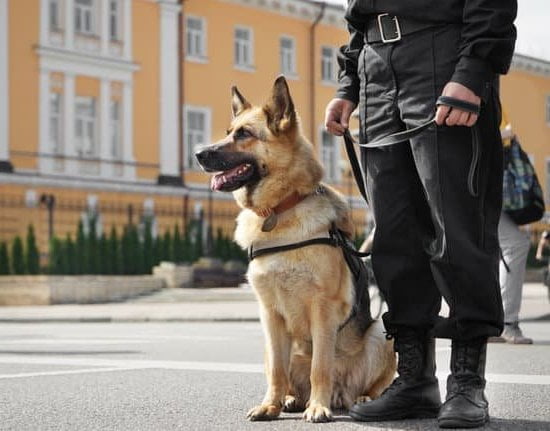Training dogs is an essential aspect of responsible pet ownership. It not only ensures the safety and well-being of your furry friend but also strengthens the bond between you and your canine companion. In this article, we will explore the various aspects of training dogs, from basic commands to advanced techniques, and the long-term benefits it provides.
Training dogs goes beyond just teaching them how to sit or stay. It plays a crucial role in shaping their behavior, social skills, and overall development. Whether you have a puppy or an older dog, investing time and effort into proper training can make a significant difference in their quality of life.
From understanding the importance of basic commands to delving into the different training methods available, we will provide insights into the best practices for effectively training your dog. Additionally, we will discuss common mistakes to avoid and highlight the role of consistency and patience in achieving long-lasting results.
So, whether you are a first-time pet owner or looking to enhance your dog’s skills, this article will equip you with valuable information on training dogs for a fulfilling companionship experience.
Basic Commands Every Dog Should Know
Training dogs is an important aspect of responsible pet ownership. Not only does it ensure the safety of your dog and those around them, but it also strengthens the bond between the owner and the pet. Basic commands are essential for effective communication and control, making them a crucial part of any dog training regimen.
Some of the basic commands every dog should know include:
- Sit
- Stay
- Come
- Heel
- Leave it
These commands are not only useful in everyday situations, but they can also be life-saving in certain circumstances. For example, a well-trained dog that responds to “come” immediately can be prevented from running into traffic or getting into other dangerous situations.
When training dogs to respond to these basic commands, it is essential to use positive reinforcement rather than punishment. This approach creates a positive association with obeying commands and strengthens the bond between the owner and the dog. Using treats, praise, and toys as rewards for obeying commands can make training a positive experience for both the dog and the owner.
Consistency and patience are key when teaching these commands to a dog. It may take time for a dog to learn and consistently obey these commands, but with consistent training sessions and patience, most dogs can learn these basic commands effectively. Remember that every dog is unique, so adapting the training method to fit your dog’s personality is crucial for successful training.
Positive Reinforcement Versus Punishment in Dog Training
When it comes to training dogs, one of the most important considerations is the method of training used. Positive reinforcement and punishment are two common techniques employed in dog training, each with its own advantages and disadvantages. It is essential for dog owners to understand the difference between these methods and choose the one that best suits their dog’s personality and learning style.
Positive reinforcement involves rewarding your dog for displaying a desired behavior, such as sitting when commanded or walking on a leash without pulling. This can be done using treats, praise, or toys.
One of the main benefits of positive reinforcement is that it creates a strong bond between the owner and the dog, as well as a positive association with training. Additionally, this method has been found to be more effective in changing behavior in the long term compared to punishment.
On the other hand, punishment involves applying negative consequences to discourage unwanted behaviors, such as pulling on the leash or jumping on people. This may include verbal reprimands, physical corrections like using a choke chain, or even shock collars. While punishment may produce immediate results in stopping undesirable behavior, it can also lead to fear, anxiety, and aggression in some dogs if not used correctly.
When deciding which method to use for training dogs, it is important to consider your individual dog’s temperament and personality. Some dogs respond better to positive reinforcement while others may require more structure and boundaries through punishment. Ultimately, successful dog training comes down to understanding your dog’s needs and finding the right balance between positive reinforcement and punishment techniques for effective results.
- Positive reinforcement creates a strong bond between owner and dog
- Punishment may produce immediate results but can lead to negative emotional effects
- Consider your individual dog’s temperament when choosing a training method
Choosing the Right Training Method for Your Dog’s Personality
When it comes to training dogs, it’s important to consider the individual personality of your furry friend. Not all dogs learn in the same way, and what works for one dog may not work for another. Choosing the right training method for your dog’s personality is crucial in ensuring effective and successful training.
Some dogs respond well to positive reinforcement, while others may require a firmer approach. Understanding your dog’s temperament and disposition can help you determine the most effective training method. For example, a shy or anxious dog may need gentle and patient training, while a more confident and energetic dog may respond better to more active and engaging training methods.
It’s also essential to consider your own personality and lifestyle when choosing a training method for your dog. If you are an active person with a lot of time to dedicate to training, more hands-on and intensive training methods may be suitable. On the other hand, if you have a busy schedule, you may want to look for more low-maintenance techniques that still yield results.
In addition to considering your dog’s personality, it’s important to be consistent in your training efforts. Dogs thrive on routine and structure, so establishing clear expectations and boundaries will help them understand what is expected of them during their training sessions.
| Training Method | Best Suited Personality Types |
|---|---|
| Positive Reinforcement | Shy or anxious dogs |
| Firm Approach | Confident and energetic dogs |
The Benefits of Training Dogs for Mental Stimulation
Training dogs is not just about teaching them basic commands and good behavior; it also has significant benefits for their mental stimulation. Mental stimulation is essential for a dog’s overall well-being, as it keeps them engaged, prevents boredom, and satisfies their natural instincts. By incorporating mental exercises into your dog’s training routine, you can ensure that they remain happy, healthy, and well-balanced.
One of the key benefits of training dogs for mental stimulation is the prevention of behavioral issues. Dogs that are mentally stimulated are less likely to engage in destructive behaviors such as chewing, digging, and excessive barking. Mental stimulation through training also helps reduce anxiety and stress in dogs, leading to a more content and relaxed pet.
In addition to preventing behavioral problems, mental stimulation through training can also strengthen the bond between you and your dog. When you engage your dog in regular training sessions that challenge their mind, you create opportunities for positive interaction and communication.
This not only deepens your relationship with your pet but also builds trust and mutual respect. It is important to note that mental stimulation should be tailored to your dog’s individual needs and capabilities to ensure a positive experience.
| Benefit | Description |
|---|---|
| Prevention of Behavioral Issues | Dogs that are mentally stimulated are less likely to engage in destructive behaviors such as chewing, digging, and excessive barking. |
| Bond Strengthening | Mental stimulation through training creates opportunities for positive interaction and communication, deepening the bond between you and your dog. |
| Anxiety Reduction | Mental stimulation through training helps reduce anxiety and stress in dogs, leading to a more content and relaxed pet. |
Advanced Training Techniques for Working Dogs
Specialized Skills for Working Dogs
Working dogs, such as police K9s, search and rescue dogs, and service animals, require specialized training to perform their duties effectively. This advanced training goes beyond basic obedience commands and focuses on developing skills specific to the dog’s role.
For example, a police K9 may receive extensive training in scent detection, apprehension techniques, and crowd control. Service dogs, on the other hand, may undergo rigorous training to assist individuals with disabilities in tasks such as retrieving objects, opening doors, or providing support during medical emergencies.
Scent Detection Training
One of the most crucial skills for working dogs is scent detection. Whether it’s detecting drugs, explosives, or missing persons, teaching a dog to use their sense of smell effectively requires specialized training techniques. Handlers use methods such as scent imprinting, discrimination training, and controlled exposure to various scents to hone a dog’s ability to detect specific odors accurately.
Complex Task Training
In addition to obedience and scent detection training, working dogs often learn complex tasks that require problem-solving abilities and critical thinking. For instance, search and rescue dogs must be trained to navigate through challenging terrain while following scent trails and signaling when they locate a victim. Service animals are taught to provide assistance based on individual needs such as guiding the visually impaired or alerting an individual with epilepsy before a seizure occurs.
Overall, the advanced training techniques used for working dogs are tailored to each dog’s specific role and requirements. This level of specialized training not only enhances the dog’s performance but also ensures their safety and effectiveness in carrying out their duties.
Common Mistakes to Avoid When Training Your Dog
Skipping the Basics
One of the most common mistakes pet owners make when training their dogs is skipping the basic commands. Without a strong foundation of basic commands such as sit, stay, come, and leave it, it can be challenging to move on to more advanced training techniques. These basic commands are essential for your dog’s safety and can help build a strong bond between you and your furry friend.
Using Punishment as a Primary Training Method
Another mistake that many dog owners make is relying too heavily on punishment as a primary training method. While it’s important to correct undesirable behaviors, using punishment as the main form of training can lead to fear, anxiety, and even aggression in some dogs.
Positive reinforcement, on the other hand, has been proven to be more effective in shaping a dog’s behavior. Using treats, praise, and rewards when your dog exhibits good behavior can lead to better results in the long run.
Being Inconsistent With Training
Consistency is key when it comes to training dogs. Unfortunately, many pet owners make the mistake of being inconsistent with their training efforts.
Whether it’s enforcing rules one day and letting them slide the next or sending mixed signals with commands and expectations, inconsistency will only confuse your dog and make it harder for them to learn. It’s important for all members of the household to be on the same page when it comes to training so that your dog receives consistent messages and guidance.
By avoiding these common mistakes and taking a positive and consistent approach to training dogs, you can set your furry friend up for success and strengthen your bond with them at the same time.
The Role of Consistency and Patience in Dog Training
Consistency and patience are key factors in successfully training dogs. Dogs thrive on routine and repetition, so it is essential to be consistent in your commands, expectations, and rewards. For example, if you are teaching your dog to sit, use the same command each time and expect them to sit before giving them a treat or praise. Inconsistency can confuse dogs and make it harder for them to understand what is expected of them.
Additionally, patience is crucial when training dogs. It’s important to remember that learning takes time, and every dog learns at their own pace. Some dogs may pick up on commands quickly, while others may require more time and practice. Getting frustrated or losing your temper during training sessions can have a negative impact on your dog’s learning process. Remaining patient and calm will create a positive learning environment for your dog.
Positive reinforcement is an effective way to encourage consistency and patience in dog training. By rewarding good behavior with treats, praise, or playtime, you can motivate your dog to continue following commands and learning new behaviors. Consistently using positive reinforcement and remaining patient throughout the training process will help build a strong bond between you and your dog while creating a well-behaved pet that understands what is expected of them.
The Long-Term Impact of Properly Training Your Dog
Properly training your dog can have a significant and long-lasting impact on their behavior and well-being. It is important to understand that training is not just about teaching your dog basic commands, but also about building a strong and respectful bond between you and your pet. By investing the time and effort into training your dog, you are setting them up for a happier and more fulfilling life.
One of the most important benefits of training dogs is that it helps to prevent behavioral issues in the future. Dogs that receive proper training are less likely to develop aggressive or destructive behaviors, which can lead to a more harmonious relationship between you, your pet, and others. Additionally, a well-trained dog is safer to be around, both for themselves and for others.
Moreover, training can provide mental stimulation for your dog, which is essential for their overall well-being. Dogs are intelligent animals that thrive on mental challenges, so by continuing to engage in training activities throughout their lives, you are keeping them mentally sharp and content.
This can lead to a happier and healthier pet for many years to come. Overall, the long-term impact of properly training your dog cannot be overstated – it leads to a more fulfilling and enjoyable companionship for both you and your furry friend.
Frequently Asked Questions
What Are the 5 Golden Rules of Dog Training?
The 5 Golden Rules of Dog Training involve being consistent, using positive reinforcement, keeping training sessions short and fun, providing the right environment for learning, and being patient with your dog’s progress.
What Are the 7 Most Important Dog Commands?
The 7 Most Important Dog Commands include sit, stay, come, down, heel, leave it, and off. These commands are crucial for creating a well-behaved and obedient dog.
How Should I Start Training My Dog?
When starting to train your dog, it’s important to establish a routine and set clear boundaries from the beginning. Use positive reinforcement such as treats or praise to motivate your dog and start with simple commands like sit or stay before progressing to more advanced ones.
Consistency is key in training, so be patient with your dog’s learning process.

Welcome to the blog! I am a professional dog trainer and have been working with dogs for many years. In this blog, I will be discussing various topics related to dog training, including tips, tricks, and advice. I hope you find this information helpful and informative. Thanks for reading!





